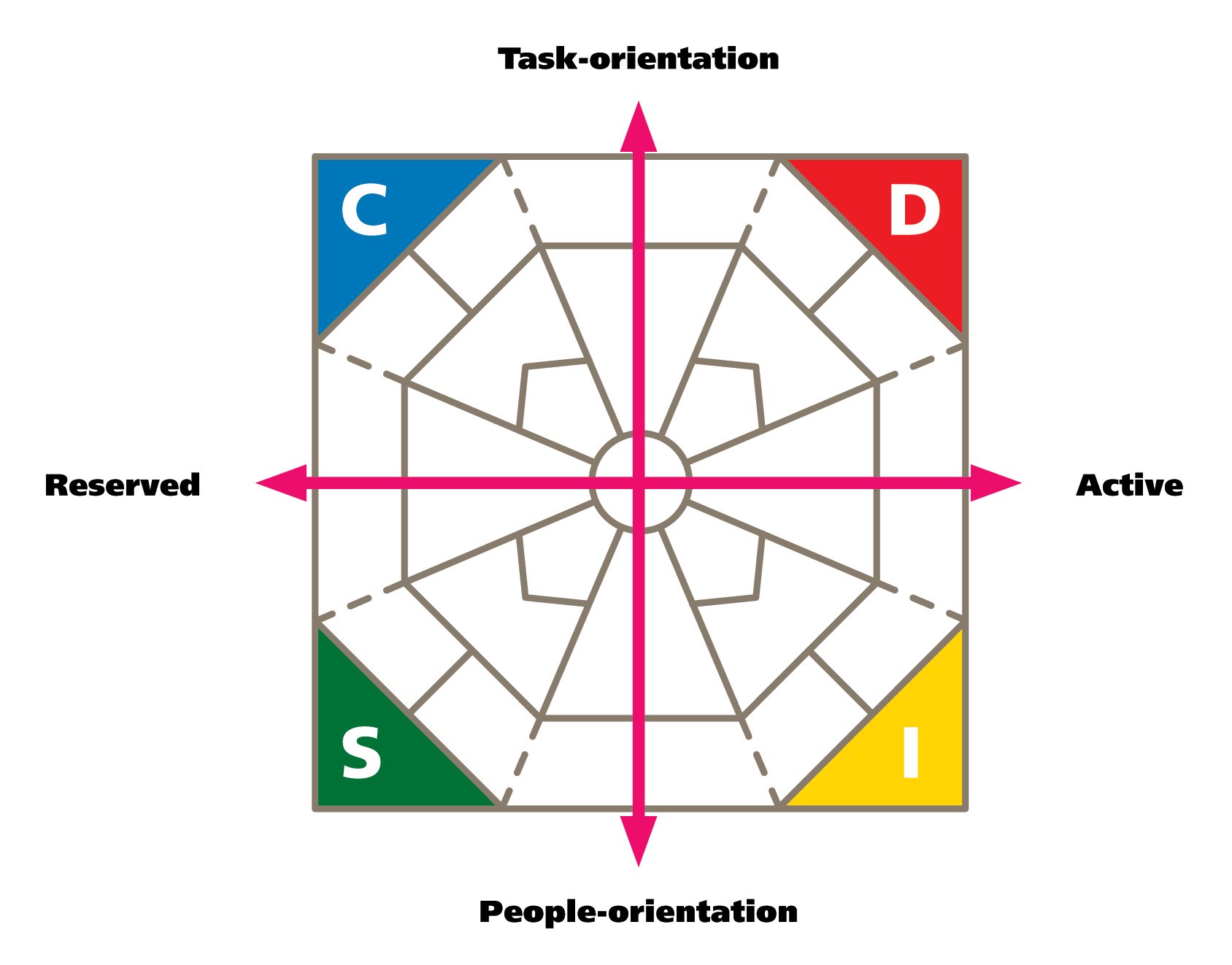I know. You're thinking, mistakes and DISC styles? Aren't you supposed to focus on the positive and the benefits each DISC style bring to our lives, teams, and organizations? Yes, of course you are supposed to do that! However, sometimes I gravitate toward the negative.
Negative bias

Research shows we are hardwired for negativity. We tend to focus more on the negative. We make decisions based on negative data versus positive, and we learn more from negative experiences than positive ones.
Phew, I'm so glad to know I'm not alone! So, let's learn from the common mistakes DISC styles can make.
Mistake #1: You see things in black & white
 As a task-oriented D or C style, you fall prey to this mistake more frequently than the people-oriented I and S styles. In this scenario, you are right and the other person is wrong. Your way of doing things is the correct way and any other method is wrong. Grey areas do not exist. Your way is the only way.
As a task-oriented D or C style, you fall prey to this mistake more frequently than the people-oriented I and S styles. In this scenario, you are right and the other person is wrong. Your way of doing things is the correct way and any other method is wrong. Grey areas do not exist. Your way is the only way.
Here's how it may show up in the task-oriented styles:
D-Style
- Steam rolls over people
- Poor listener
- Over-delegates and over-directs
C-Style
- Gets stuck in ways of doing things
- Does not take risks in new things
- Overly critical
Tips to fix:
Your awareness of a mistake, any mistake, is the first step. Self-awareness allows you to make better choices and decisions. You can also recognize this mistake in others, which then equips you with knowledge in how best to interact with the individual.
Have you heard the phrase: "there's more than one way to skin a cat"? Adopt this phrase as your slogan. Essentially, it means there are many ways to do things and many ways to achieve a goal. What works for you might not work for someone else. Life is messy and has lots of grey areas. Be okay with it. Be open to understanding the perspective of others. Truly listen to what they have to say. You don't need to be the top expert or right all the time. It won't kill you, and in fact, it may help you in the long run. Others will feel validated and you might learn something new!
Mistake #2: You think or feel the world revolves around you
As an active D or I style, you are the ones who fall most frequently into this mistake. You tend to become too self-focused and enjoy being the center of attention. After all, it's all about you, right? How does this benefit me? What's in this for me? I will tell you how great I am...I will tell you all about me! Here's how it may show up:
D-style:
- Self-centered
- Short fuse
- Becomes demanding
I-style:
- Speaks over listen
- Seeks attention
- Protests
Tips to fix:
Focus more on others. Practice patience and remember, not all styles act and decide as fast as you. Write yourself a reminder to ask more questions and wait to hear, and sincerely listen, to their response. Focus on common ground, as a way to think of the other person. Ask them what they think or how they feel. Slow down and smell the roses! You might surprise yourself and see a new perspective.
Mistake #3: You worry too much about what others think
As a people-oriented, I or S style, you fall into this trap more frequently than your task-oriented D and C styles. You care strongly about others and you care about what they think of you. You like to be liked. Disappointing anyone or letting them down is not a good outcome. You may not take action because you are worried about what the person may think or you may become overly emotional. Here's what it may look like:
I-style:
- Seeks attention
- Becomes overly caring
- Becomes too interested in others' opinions
S-style:
- Leans on others
- Slower to move
- Gives in too easily
Tips to fix:
Stop comparing yourself to others and instead try comparing you to you. Focus on how you have grown and what you have achieved. Don't worry about what someone else thinks. You will always find someone who has more than you or does it better than you. That's okay! You are the only one who can do you. Embrace yourself for who you are. Write yourself a note and repeat the message out loud-- "you are enough"!
Mistake #4: You are addicted to your comfort zone
As the reserved S or C style, you tend to live here. The tried and true are your preference. Sudden changes make you feel uncomfortable. Stable and predictable environments are where you thrive and do your best. You prefer routines, structure, known situations and people. Here's what it may look like:
S-style:
- Worships status quo
- Resists change
- Becomes overly cautious
C-style:
- Gets stuck in ways of doing things
- Hesitates to act
- Does not take risks
Tips to fix:
Try something new everyday to help move yourself outside of your comfort zone and becoming stuck in routine and/or status quo. Be curious about life. Take an opportunity to explore and be okay with the fact it may feel uncomfortable. Take baby steps. You don't need to climb Mt. Everest. Try small things to push yourself outside of your comfort zone each day.
 Final thoughts
Final thoughts
Interestingly enough, overusing your strengths, oftentimes triggers these common mistakes. When you look at your DISC report, you should embrace who you are. You are awesome just the way you are. DISC helps raise your awareness. You should also be aware of how you use your strengths. Don't fall in the trap of overusing them or you just might find yourself a victim of one of these common mistakes. If you do; don't sweat it! You have here some great tips to fix it! Share your own tips below in the comments.
Reach out to us if you want more tips and information about your own DISC style!

